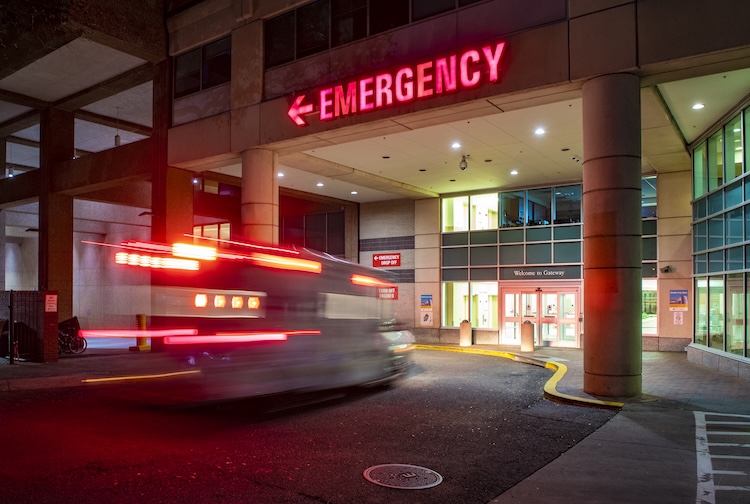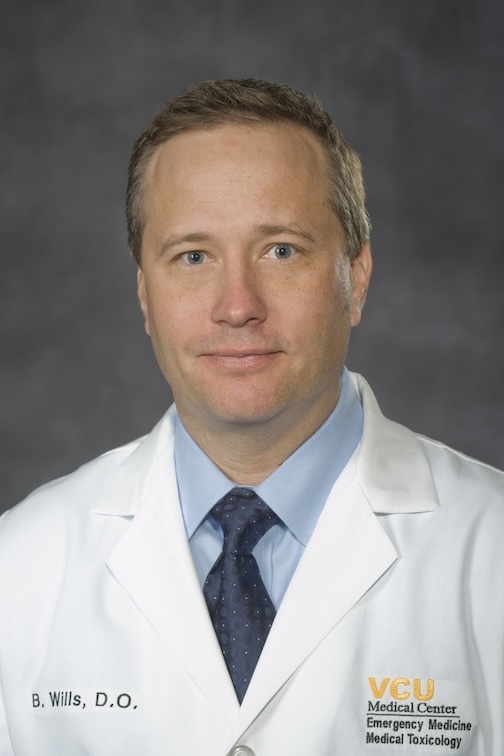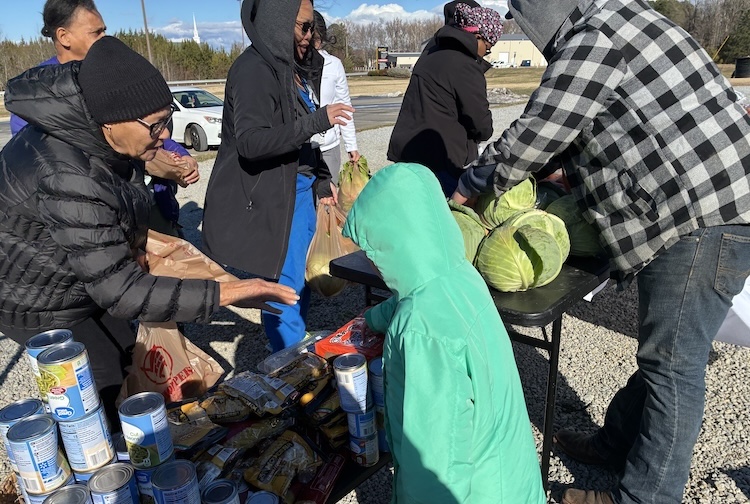The Virginia Naloxone Project: How Narcan in EDs is saving lives from opioid overdoses
A life-saving strategy equipping at-risk patients with naloxone nasal spray before leaving the hospital is being led by clinician-researchers at VCU Medical Center.
September 23, 2025 VCU clinician-researchers say connecting with at-risk patients through an emergency department-based naloxone distribution program can also encourage patients to consider recovery services. (Allen Jones, Enterprise Marketing and Communications)
VCU clinician-researchers say connecting with at-risk patients through an emergency department-based naloxone distribution program can also encourage patients to consider recovery services. (Allen Jones, Enterprise Marketing and Communications)
By Sara McCloskey-Nieves
The number of people dying from opioid abuse is ten times what it was two decades ago, according to the latest data from the Substance Abuse and Mental Health Services Administration.
However, the nasal spray naloxone (Narcan™) can bring someone back from death in mere minutes. Some could make the argument that wider availability of the opioid-reversal drug over the counter can save more lives, but clinician-researchers have seen mixed results on its impact – one reason being that the cost of naloxone can run upwards of $45.
Brandon Wills, DO, FASAM, FAACT, medical director of VCU Health's MOTIVATE Clinic, believes there is another way to get this life-saving medication into the hands of those who need it most – provide it to patients for free in the emergency department.
 Brandon Wills, DO, FASAM, FAACT, is the medical director of VCU Health's MOTIVATE Clinic. (Tom Kojcsich, Enterprise Marketing and Communications)
Brandon Wills, DO, FASAM, FAACT, is the medical director of VCU Health's MOTIVATE Clinic. (Tom Kojcsich, Enterprise Marketing and Communications)
“By focusing on a patient population that we were already treating, we could easily provide patients with the medication and teach them how to use it,” said Wills, who is also a professor in the Virginia Commonwealth University School of Medicine’s departments of Psychiatry and Emergency Medicine. “Overall, giving at-risk patients the tools to potentially help themselves and others struggling with opioid use disorder (OUD) can help combat the opioid epidemic.”
Patients who come to the emergency department after a nonfatal opioid overdose are a high-risk population; about 1 out of 20 dies within six months of their initial visit. In a recently published study, a research team led by Wills found that implementing a naloxone discharge program in a hospital can bring down that statistic by more than half. They conducted this research in VCU Medical Center’s Emergency Department.
This study kicked off Wills’ efforts to bring The Naloxone Project to Virginia. The initiative initially started in Colorado and aims to transform EDs into intervention spaces – where a medical crisis can become a step toward recovery. Wills spoke with VCU Health News about this project and its impact on patients throughout the commonwealth.
What is the Virginia Naloxone Project, and what are its goals?
The Virginia Naloxone Project equips hospitals with naloxone, which is then directly given to patients who are most at risk of having OUD or experiencing an opioid overdose. We train health care workers to provide these interventions, including educating patients about how to use naloxone and recovery resources.
In 2024, we received Virginia Opioid Abatement Authority funding, which has helped The Virgina Naloxone Project expand to about 40 emergency departments across the commonwealth. Our goal is to have a presence in all emergency departments in Virginia.
How does the patient-doctor relationship influence access to naloxone, and how is that different from simply purchasing it over the counter?
In the ED, patients are often seen shortly after a non-fatal overdose, which is a moment of high risk and vulnerability. Typically, discharge from the emergency department involves minimal engagement, perhaps a referral or a prescription for naloxone, which many patients don’t fill due to cost or other barriers.
Providing naloxone directly in the ED changes that dynamic. It removes logistical hurdles, making it more convenient. It's also a tangible way to let a patient know that we care. This approach not only improves access but also helps reduce stigma around substance use disorders. When clinicians feel empowered to help, it can positively influence their attitudes and interactions, potentially encouraging patients to consider recovery services.
While naloxone is primarily a harm-reduction tool, giving it directly to patients and teaching how to use it can also foster trust and open doors to further support.
Once a patient is identified as a candidate for the program, what steps are taken to encourage them to take naloxone home?
Emergency physicians use their discretion to determine who might benefit from a naloxone kit. Each kit includes basic instructions for using the nasal spray, and either a nurse or a physician provides a brief explanation. The kits also contain referral information for recovery services, offering a chance for a short but meaningful conversation about the patient’s next steps. The interaction is concise but meant to be impactful.
What broader message do you hope people take away from this work?
Substance use disorders affect people across all demographics. These patients are part of our communities — they are our family members, friends and neighbors. There’s a pressing need to improve how health care institutions support them and to reduce stigma.
Changing attitudes is difficult, but leading by example can gradually shift perspectives – one patient, one nurse, one doctor at a time. I've already seen it with my own eyes in our health system; things are already getting better. Progress may be slow, but it’s happening, and continuing to build compassionate, stigma-free care is a key mission moving forward.
Learn more about our innovative researchers and their projects




.jpg)